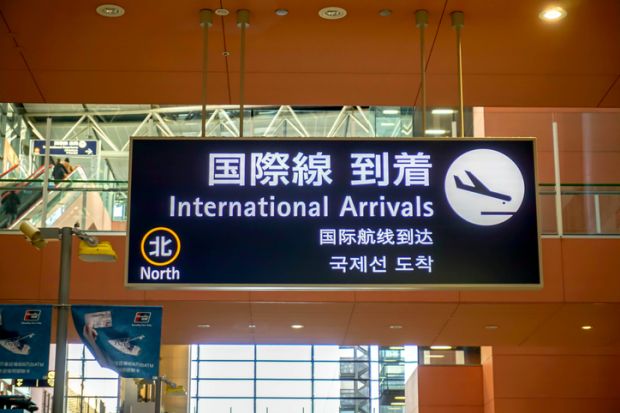The demographics of international academics in Japan have shifted from being more Western to more Asian.
“Twenty years ago, most foreign teachers came from the US or UK; but for the past few years, the largest number has come from China,” said Futao Huang, a professor at the Research Institute for Higher Education at Hiroshima University. “There have been increasing numbers of Chinese scholars since the 1990s.”
For yet-to-be published research, Professor Huang surveyed 1,285 overseas academics as part of an ongoing project for the Japan Society for the Promotion of Science.
His research was prompted, in part, by the ongoing question of how Japan’s higher education system can offset unfavourable demographic trends, while also trying to boost research and innovation. “Given the declining number of 18-year-olds, we need to know: to what extent is Japan attracting high-level talent from overseas?” asked Professor Huang, co-editor of a new book launched this month, International Faculty in Asia in Comparative Global Perspective.
Professor Huang found that China-born academics – including himself – now made up the largest cohort (22 per cent), followed by Americans (19 per cent), Koreans (13 per cent) and Britons (8 per cent).
Compared with their Western counterparts, Chinese academics tend to set down Japanese roots at an earlier stage.
“Many begin as graduate students, as tuition is more affordable than in the US or UK. Plus, the language, culture and values are more similar,” Professor Huang said. “Tokyo and Kyoto are known as having some of the best universities in Asia, and the country is perceived as being safe.”
He found that 80 per cent of Chinese researchers received their final degrees in Japan, whereas 80 per cent of anglophone faculty received their final degrees outside Japan.
Asian academics are also more like to have PhDs: 90 per cent of Chinese faculty and 80 per cent of Koreans have doctorates, which roughly matches the level among domestic Japanese academics. However, fewer than 60 per cent of the US and UK academics have doctorates, possibly because more entered as language teachers.
The fields of study also varied widely depending on nationality. Chinese academics tend to be in engineering; the Koreans in social sciences; and Americans and the British in the humanities.
Medicine is one field that attracts very few foreign academics, because of significant language and other hurdles. “It’s very difficult for a foreigner to be hired in a medical or science field in Japan,” Professor Huang said.
Professor Huang used this data to compare domestic and international academics in terms of “academic productivity,” which he measured by 13 indicators. These go beyond the traditional metrics of publication citations and patents, but also include the number of PhDs supervised, and whether academics created artistic works or computer programs used by the public. Overall, international faculty were more productive in some ways, and less productive in others.
In terms of article publication, Chinese academics ranked first, followed by Japanese and Koreans. Chinese- and Japanese-authored papers also were more likely to be peer-reviewed.
International academics were, in general, more likely to publish and speak at conferences overseas.
He concluded: “I don’t think the national policy of attracting foreign researchers is successful yet…The highest level of Western science researchers are still not coming to Japan.”
Register to continue
Why register?
- Registration is free and only takes a moment
- Once registered, you can read 3 articles a month
- Sign up for our newsletter
Subscribe
Or subscribe for unlimited access to:
- Unlimited access to news, views, insights & reviews
- Digital editions
- Digital access to THE’s university and college rankings analysis
Already registered or a current subscriber? Login








